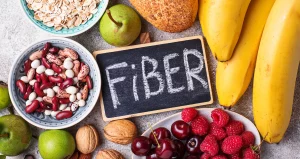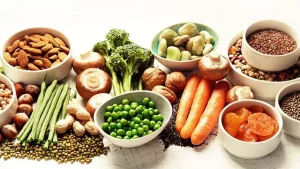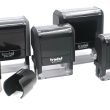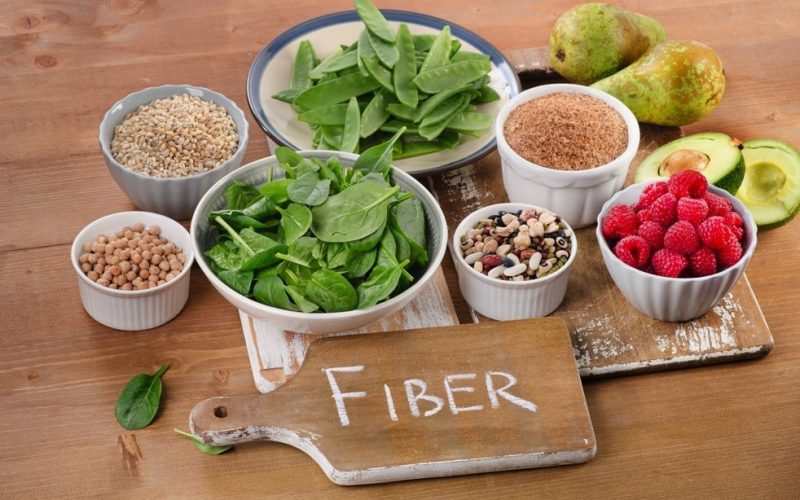Introduction
Many people know fiber is good for you, but they might not be sure how to eat enough of it. A High-Fiber Diet helps with weight management, heart health, and healthy digestion. Fiber can also lower the risk of certain illnesses, like colon cancer. Kids, teens, and adults all need enough fiber, yet many people do not get the recommended amount. If you want to boost your gut health or feel fuller after meals, adding fiber is a smart choice. This article will show you easy ways to pick high fiber foods and include them in your daily routine. We will also talk about different types of fiber, how to avoid tummy troubles, and what role fiber plays in controlling blood sugar. By the end, you will see how a few small changes can bring big benefits to your health.
What Is This? Understanding Dietary Fiber

Dietary fiber is the part of plants that our bodies cannot fully break down. It comes from foods like fruits, vegetables, grains, and beans. Unlike sugars or fats, fiber passes through our system mostly intact. This helps clean our intestines and keeps us regular. Fiber also makes us feel full, which can help with weight management. Because it slows how we absorb sugars, it supports blood sugar control too. Kids and adults need fiber for a healthy gut and colon health. If you are not used to eating fiber, add it slowly to avoid gas or bloating. Some people might worry they have to eat bland foods, but that is not true. A high-fiber diet can include tasty meals like veggie stir-fries, hearty soups, or fresh fruit salads. As you learn more about fiber, you will see it is not complicated.
What Is That? Types of Fiber
Soluble Fiber
Soluble fiber dissolves in water and forms a gel-like substance in your belly. It helps cholesterol-lowering by grabbing fats and moving them out of your body. Oats, beans, apples, and carrots are good sources of soluble fiber. This type also helps keep your blood sugar steady, which is great for people worried about diabetes.
Insoluble Fiber
Insoluble fiber does not dissolve in water. It adds bulk to stool, helping you avoid constipation. Whole grains, wheat bran, and many vegetables contain insoluble fiber. If you often have constipation relief issues, foods high in insoluble fiber can be your friend. This type also supports colon health by speeding up how food moves through the gut.
Balancing Both
A balanced high-fiber diet has both soluble and insoluble fiber. You do not need to track them separately. By eating a mix of fruits, veggies, and grains, you usually get enough of each type.
The Benefits of a High-Fiber Diet

A high-fiber diet helps your body in many ways. First, it supports weight management because fiber fills you up without adding too many calories. This can help you eat less junk food. Second, fiber assists with healthy digestion by pushing waste through your system and preventing constipation. Third, it can improve heart health by lowering harmful cholesterol. This may reduce your risk of heart disease. Fourth, a steady flow of fiber helps keep blood sugar stable, important for people worried about diabetes. Fiber also fuels good bacteria in your gut, boosting gut health. Over time, these friendly microbes can improve your mood and immune system. Finally, a diet rich in fiber often includes more fruits, vegetables, and whole grains, which are loaded with vitamins and minerals. This variety brings extra energy and can protect you from many health problems.
Tips for Increasing Fiber
Start Slow
If you rarely eat high fiber foods, add them gradually. Jumping from zero to lots of fiber can cause gas or bloating. Begin with a piece of fruit at breakfast or a side of beans at lunch.
Swap Refined Grains for Whole Grains
Look for whole grains in bread, pasta, or rice. For instance, choose brown rice over white. This small switch boosts your fiber intake without big changes to flavor.
Include Fruits and Vegetables
Aim for at least five servings a day. Keep the skins on apples or cucumbers if they are edible and clean. The peel often has extra fiber.
Add Seeds and Nuts
Sprinkle chia seeds or flaxseeds on cereal, salads, or yogurt. Almonds or peanuts also have fiber, but watch portion sizes since they can be high in calories.
Table: High-Fiber Food Examples
| Food | Fiber Content (per 100g) | Why It’s Great |
|---|---|---|
| Oats | ~10g | Helps cholesterol-lowering, good for breakfast |
| Lentils | ~8g | Great plant-based protein, supports gut health |
| Brown Rice | ~2g | More nutrients than white rice, part of whole grains |
| Apples (with skin) | ~2.4g | Natural sweetness, supports healthy digestion |
| Broccoli | ~2.6g | Rich in vitamins, helps colon health |
These foods can easily fit into your daily meals, giving you extra fiber without too much effort.
Avoiding Tummy Troubles
Suddenly adding Lots of Dietary Fiber can upset your stomach. If you feel bloated or gassy, slow down. Drink plenty of water to help fiber move through your system. Water is essential for healthy digestion, especially when you eat more fiber. Some people like to use fiber supplements if they cannot get enough from food. Talk to a doctor if you have major concerns. You can also try cooking veggies instead of eating them raw, since softer foods may be easier to digest. Chewing thoroughly breaks down fibers, helping your body process them. If you notice certain beans or grains cause discomfort, try different ones. For example, lentils might be gentler than black beans. Everyone’s gut is different, so keep track of which foods make you feel good and which ones do not.
Keeping Variety in Your Diet

A high-fiber diet does not have to be boring. You can enjoy many flavors by mixing different foods. For breakfast, try oatmeal with berries or a smoothie with spinach. Lunch could be a veggie wrap with whole grains tortillas and beans. Dinner might feature quinoa, roasted veggies, and a side of chickpeas. Snack on fruits like pears or snack on crunchy carrot sticks. This variety helps you get not just fiber but also vitamins and minerals. If you get bored, look up new recipes. Kids might like to help pick fruits at the store or chop veggies. This involvement teaches them about plant-based diet choices. Over time, you will see that a balanced approach to fiber can be fun and delicious, helping you maintain a healthier lifestyle for the long run.
Combining Fiber with Other Nutrients
Fiber works best when it is part of a balanced meal that includes protein, healthy fats, and essential vitamins. For example, pair whole-grain bread with peanut butter or turkey slices. This combination keeps you full and offers a range of nutrients. If you are making a soup with beans, add vegetables like carrots or spinach. That way, you get high fiber foods plus extra vitamins. If you are having a fruit smoothie, consider adding a spoonful of chia seeds or ground flaxseeds for more fiber and omega-3 fats. A varied diet also prevents boredom. You can experiment with global cuisines, like lentil curries or bean burritos. By mixing fiber with other important nutrients, you help your body use them better, improving everything from blood sugar control to gut health.
Conclusion
In summary, learning how to create a high-fiber diet that works for you involves picking high fiber foods, adding them slowly, and enjoying a variety of meals. By focusing on whole grains, beans, fruits, and vegetables, you boost your gut health and help manage weight more easily. Combining fiber with proper hydration and balanced meals supports heart health, stable blood sugar, and overall colon health. Over time, these simple choices can lead to better energy and fewer digestive problems. Embrace these tips, keep experimenting with recipes, and watch your body feel stronger and happier every day.
FAQs
- How much fiber should I eat daily?
Adults often aim for about 25-30 grams per day. Kids need less, based on age. Check with a doctor for exact goals. - Are fiber supplements a good idea?
They can help if you struggle to get enough fiber from food, but real foods offer more nutrients. Ask a doctor first. - Do I need to eat only whole grains to get fiber?
Whole grains are a great source, but fruits, veggies, and beans also have fiber. Mix them up for variety. - Is it okay to eat raw veggies all the time?
Yes, but cooking them can make some nutrients easier to absorb. Try both raw and cooked forms. - Can fiber help with weight loss?
Yes. Fiber helps you feel full, so you might eat less overall. It also supports healthy digestion.












